4 March 2015. Hamilton Harbour, ON. Today was the first day in the better part of two months that the air temperature edged above freezing. Just getting above the freezing point was a big leap and one that many birders seemed to appreciate. I went down to the entrance to our large industrial harbour to see if I could spot our resident Peregrine Falcons at their nest site (I did) and maybe some interesting ducks in and around the canal that connects the harbour to Lake Ontario. The canal is such a dynamic and surging waterway that even when the entire harbour and adjacent expanses of the lake are frozen, it has open water and is consequently crowded with wintering ducks. They were all there in thousands: Long-tailed Ducks, Lesser and Greater Scaup, Common Goldeneyes, Redheads, Canvasbacks, Trumpeter and Mute Swans, White-winged Scoters (pictured below) and Red-breasted and Common Mergansers; eleven species, and all but the swans were diving to feed on the Zebra Mussels which have colonized the Great Lakes.
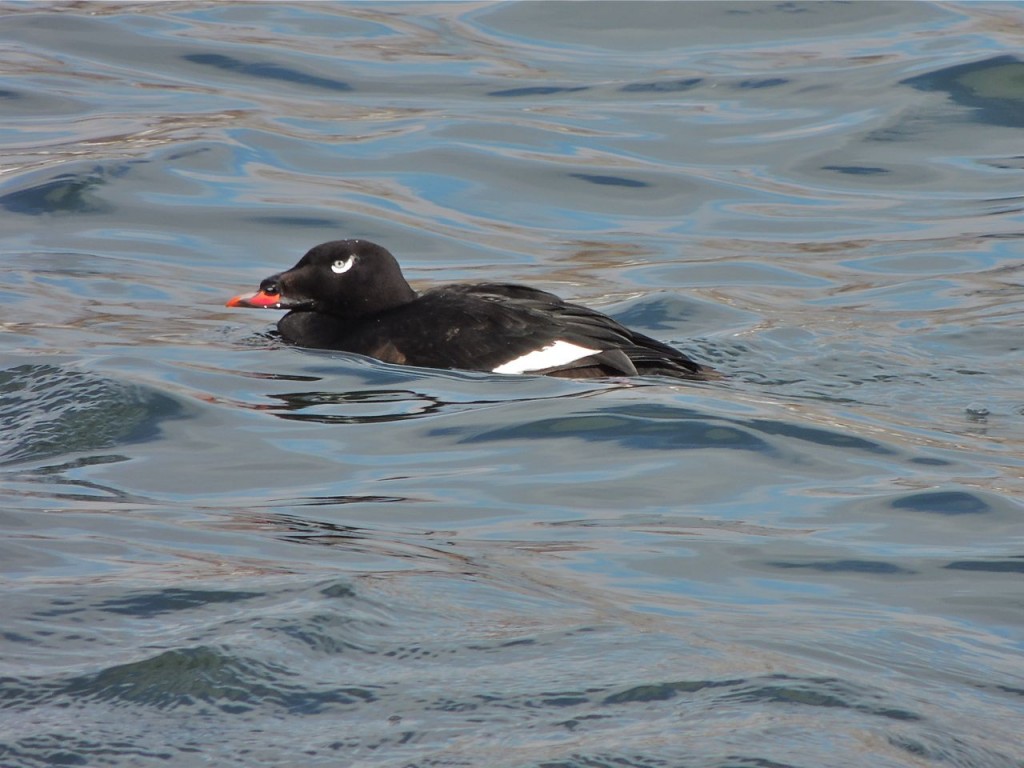
There were Herring, Great Black-backed and Ring-billed Gulls too and, away in the distance, eight Bald Eagles.
I met another area birder there; Kevin is highly respected for his encyclopedic knowledge of all species of our birds and is widely consulted as a specialist in the evolving plumages of gull species from juvenile to full adult; a three or four-year process (and utterly baffling to most). We walked out to the end of a pier, into the teeth of a northwest wind coming off the frozen harbour and, cold though it was, for the first time in a long time I didn’t feel that I was risking frostbite.
Kevin was busy taking photographs as a resource for his monograph on determining the age of female Long-tailed Ducks. I, however, was looking the other way, captivated by the sight of my Birds of the Day, the group of Bald Eagles some distance from us. Bald Eagles now regularly spend the winter on and around the ice of the harbour, where they prey on the thousands of overwintering ducks, particularly those that fail to keep their wits about them.
Here is a gallery of some of that group, mostly juveniles. It takes about four years for the full white head and tail of the adult eagle to develop.
(The gallery is visible only on the website, not if you’re reading this as an email.)
Historically Lake Ontario was perfect habitat for Bald Eagles, but their numbers crashed in the early to mid twentieth century and as recently as twenty years ago the sight of a Bald Eagle around here was quite sensational. We now have a local breeding pair, which for the past two years, has successfully produced two chicks per year; and the wintering Bald Eagles have been reliably present for perhaps the last five winters.
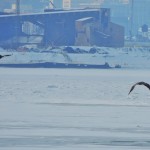
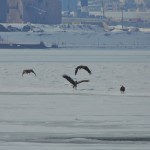
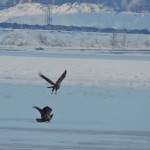
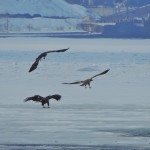
Magnificent!